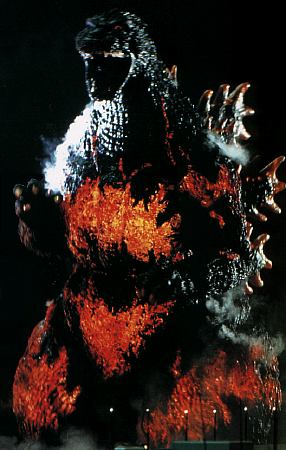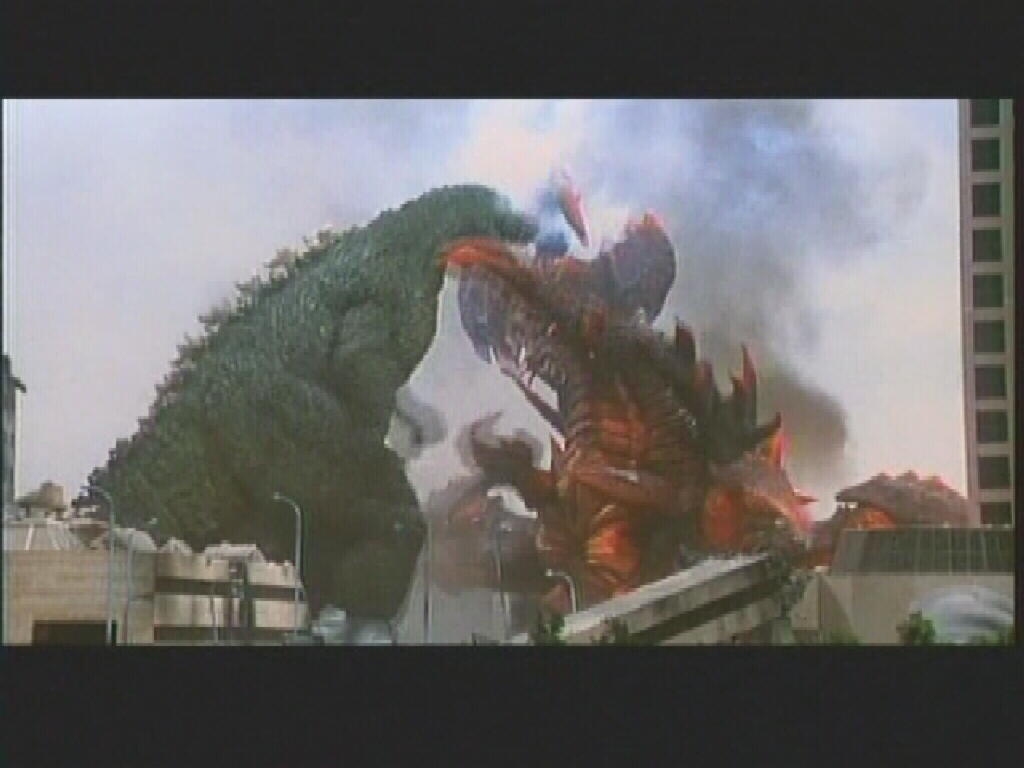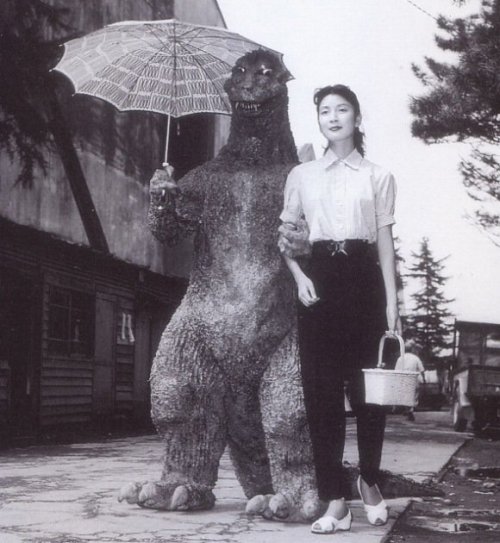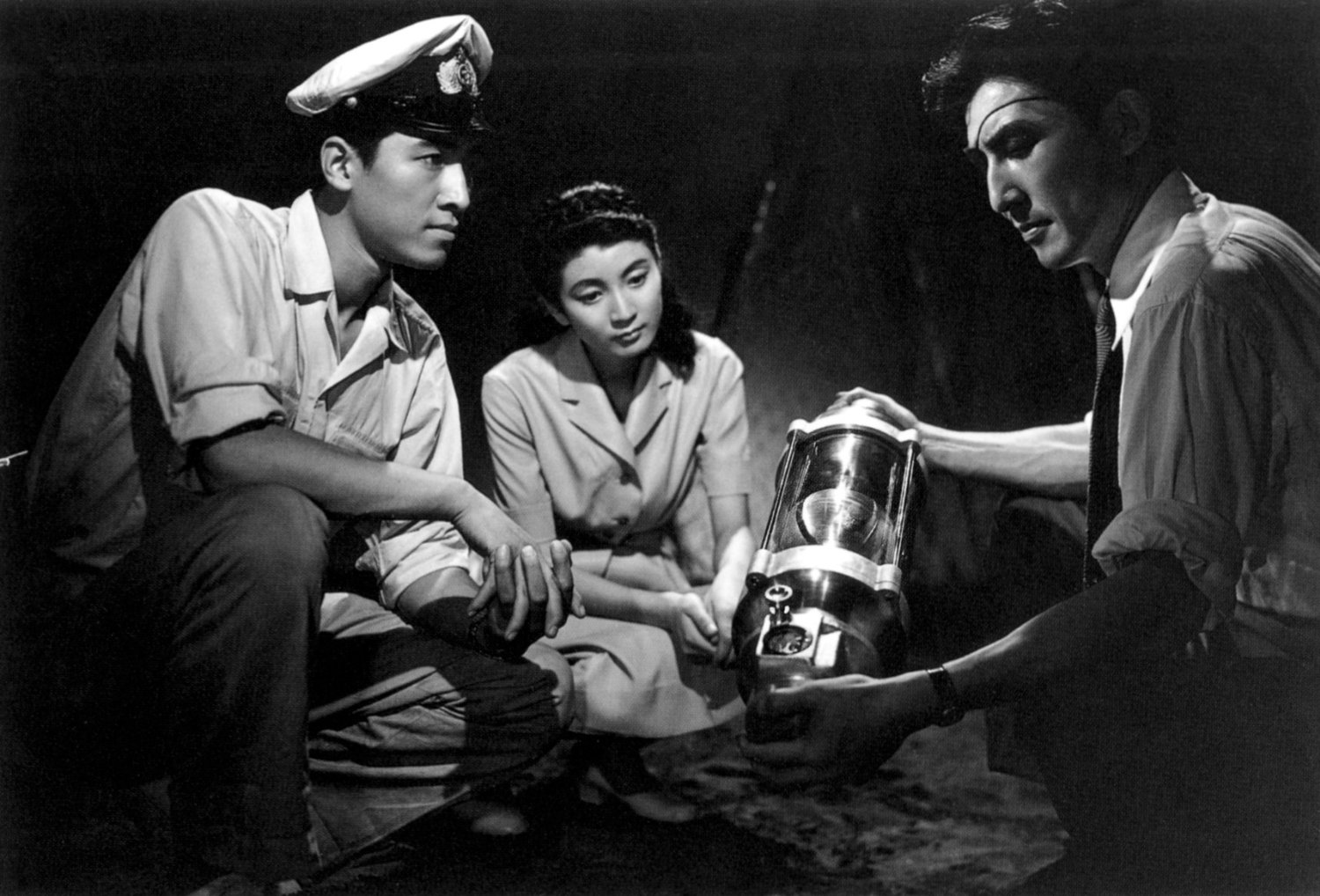Original poster for Godzilla vs Destoroyah,which is actually pretty badass...
Alright, here we are, still 47 days from Gareth Edwards' Godzilla and we're jumping a full 41 years ahead from the last Godzilla film we watched and tonight's subject matter is 1995's Godzilla vs Destoroyah, the final film in the Heisei, or second, series of Godzilla films. For the record, this series of films do not have Godzilla being the savior of humanity like the later Showa series films. Godzilla is more like an anti-hero in this series. Sure, he'll whomp the shit out of another monster, but he'll still obliterate any civilization in his path.
Okay, so upon watching this movie, it was a bit of a mistake on my part simply because there are characters who came from some of the previous Heisei entries that are present here and I had no idea what they were about, but that's nothing a little research couldn't fix. Before I elaborate on the plot of this film, I'll fill you in on any missing details.
There is a character in this film named Miki Saegusa, played by Megumi Odaka, who first debuted in 1989's Godzilla vs Biollante, that has psychic powers that she can use to communicate with or, in extreme cases, control Godzilla. In 1993's Godzilla vs MechaGodzilla, she is a member of G-Force, a special anti-kaiju task force. An egg is discovered that hatches into a baby Godzillasaurus and Godzilla seeks out this infant due to an unexplained psychic link and while the baby, now named "Baby Godzilla," is frightened of Godzilla at first, Miki convinces him to go with his new adoptive parent and the two creatures find home on a place called Birth Island. By the time Godzilla vs Destoroyah rolls around, Baby Godzilla has become Godzilla Junior, looking more like Godzilla, only about half his height and with smaller spines. Much like Godzilla's previous offspring, Minilla (or Minya), Godzilla Junior is a bit nicer than his adoptive father, actually saving Miki at one point in this movie. Miki has formed a psychic bond with Godzilla Junior and has grown quite fond of Godzilla and Junior, despite her place of employment. Okay, I think that gets us caught up, so let's move forward.
Godzilla's new look for the film. Don't worry, it's gratuitous to the plot.
Okay, so the movie starts out with Miki flying in a G-Force helicopter to find Birth Island a charred smoking rock. Cut to Hong Kong where an orange glowing Godzilla surfaces in the bay, making the water steam and boil around him and he begins wreaking havoc on the city, spewing orange atomic fire instead of blue. A G-Force meeting determines that Godzilla's heart is basically a nuclear reactor core that is currently in the process of melting down. If the core goes critical, the entire world will be wiped out. Miki grows concerned over the fate of Junior because her powers are fading and she can't get a mental lock on him. G-Force recruits a scientist that has been working on an oxygen tampering experiment similar to the oxygen destroyer that killed the original Godzilla back in 1954 while using Godzilla Junior to try and lure Godzilla into a convenient location to dispose of him, but in doing so, the scientist accidentally helps create Destoroyah, a mutated Pre-Cambrian life form that came from a soil sample that was effected by the oxygen destroyer back in 1954. A frantic race against time ensues to not only get rid of the Destoroyah creature, but to make sure that when Godzilla falls in his final battle, the Earth does not fall with him.
Destoroyah (aka Destroyer), one of the most unique Godzilla villains.
Well, I'll just come right out and say that I liked this movie and I don't think I could truly do it justice without giving some stuff away soooo spoiler alert! It may sound silly to put said alert on a review for a nearly twenty year old film, but I'm just covering my ass. I won't go too much into the acting and what have you because the version I watched was dubbed over with English. Naturally, the voice overs aren't terrible but they aren't great either. I didn't mind because that's just par for the course with English dubbed Godzilla films and I won't get my manties in a twist over it.
Let's talk about Destoroyah. This is one strange motherfucker because first it starts out as very tiny organisms that dissolve all the fish in the aquarium, then evolve into man-sized nightmares that have extendable Xenomorph-style mouths, then to even LARGER versions of that, and THEN they can combine into one Hugh Jazz version capable of shifting from flight form (as shown above) to ground form. This guy does not fuck around, and why should he with a name like Destoroyah? Now, in the film, he is referred to as "Destroyer," but from what I heard, Toho could not trademark that name, so they officially named it Destoroyah. Besides, as James Rolfe pointed out, it's so much more fun to say Destoroyah, especially when you say it with gusto ("DESTOROYAAAAHHHHH!"). I will say this through, the scene where the Special Forces unit is fighting the Destoroyah crabs in the power plant will make you scratch your head and wonder if you're still watching a Godzilla movie because it really does feel like something more along the lines of Aliens or Predator. I myself loved the practical effects used to bring the crabs to life and wish that we could see more of that in current films.
Godzilla Jr vs Destoroyah's ground form.
Alright, here's the part of the review that makes me that asshole blabbermouth you always see at the theatre who gives away the ending so if you like what you've read thus far, stop reading and go watch this movie...still here? Okay.
With the plot revolving around Godzilla's body falling apart like whenever I try to build shelves for my man cave and the fact this was the final film in the Heisei series, you're probably wondering, "Soooo, Godzilla doesn't make it, does he?" Well, he doesn't but he does. This was the final film to be made before making way for an American Godzilla film and since the film went into production around Godzilla's 40th anniversary, Toho decided that it was time to put the big guy down. This was a huge deal, enough that even CNN did a story on it. During the final fight with Destoroyah, Godzilla Junior gets beaten to the point of near death. After an unsuccessful attempt to revive Junior, Godzilla thinks he is dead and goes ballistic, unleashing everything he has on Destoroyah but also triggering his meltdown. The Special Japanese Defense Forces use freezing weapons on both Godzilla and Destoroyah, smashing Destoroyah to pieces and keeping Godzilla's energy contained enough that the world is saved but Tokyo is now uninhabitable. To see Godzilla's skin melt away as he lets out one last pitiful roar is actually very sad. Check it out below.
In case you're wondering what that ending bit was, the healthier looking version of Godzilla at the end is actually a revitalized Junior, absorbing the old Godzilla's radioactivity (so people can still live in Tokyo) which mutates him into an adult, showing in a not-so-subtle way that even if he is physically gone, Godzilla's legacy will carry on.
Not really sure what else I can say about this one, aside from I really enjoyed it. In closing, if you've enjoyed the other ones, Godzilla vs Destoroyah is not one that should be overlooked. Great fight scenes, some of the best special effects to come out of the Toho films and a surprisingly emotional end, it was the send off that the King Of The Monsters earned. Check back later as we look at...what?
Aw, shit.
-The Cynic




.jpg)










